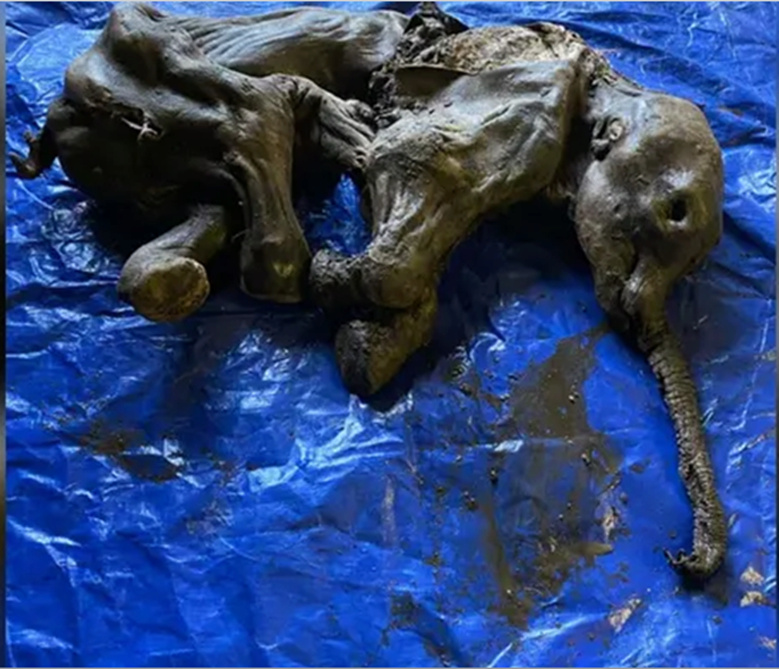A study reveals exciting genetic information about mammoths

Archive of a mammoth skeleton
The largest-ever analysis of the woolly mammoth's genetic data has revealed new information about the Ice Age elephant icon, including its fluffy hair, small ears, ability to withstand cold, store grease and even dry earwax.
Researchers said Friday that they analyzed the genetic tape (genome) of twenty-three woolly mammoths based on preserved remains in Siberian permafrost, and then compared them with the genetic tape of twenty-eight Asian and African elephants from the modern era.
The most important findings of the researchers
According to David Deez del Molino, an evolutionary geneticist from the Center for Ancient Fossils in Stockholm and lead author of the study published in the scientific journal (Current Biology), "The goal was to find those mutations that are present in all types of mammoths, but are not found in any of the elephants, that is, Patterns of genetic adaptation found exclusively in the woolly mammoth.
"We found that the woolly mammoth's genes included molecular adaptations related to coping with cold Arctic environments, such as dense fur, lipid storage and metabolism, thermal sensing, and other adaptations," added Diez del Molino.

The study included genetic tape from a mammoth that lived 700,000 years ago, around the time mammoths originated in the Siberian steppes, and genetic tapes from other mammoths that lived at later times, providing a glimpse into how genetic adaptation evolved in mammoths.
The new study shows that 92 percent of the unique mutations have already appeared since the mammoth's origins, with evolution continuing in certain traits. Mammoths' fur, for example, continued to grow thicker and their ears got smaller over time.
Love Dalen, an evolutionary geneticist at the Center for Ancient Fossils in Stockholm and one of the senior authors of the study, said, "Maybe the mammoths in our study who lived 700,000 years ago had larger ears than the ears of mammoths that lived in the last ice age."
Among the highly developed genes was one that, when "turned off" in test rats, caused their ears to become very small.
Woolly mammoths were almost the size of modern African elephants, about four meters high, but their ears were much smaller to reduce the loss of body heat than if their ears had a large surface, and several genes related to the quality and growth of fur differed from contemporary elephants.

One of these genes is associated, when present in humans, with uncombable hair syndrome, a condition characterized by dry, frizzy hair and the inability to comb it flat.
In mammoths, the more luxuriant hair, together with the fat deposits, may have contributed to the formation of an insulating layer in the extreme cold.
Mammoths had a mutation in a gene associated with earwax drying in humans, but the advantage of this to mammoths is unknown.
The same mutation is associated with humans not having a strong armpit odor, but that doesn't mean that mammoths might have smelled good.
"I very much suspect that mammoths sweated from their armpits. This is very human, I think. Other mammals regulate their body temperature in other ways. So it's not very clear if mammoths smell differently because of this genetic mutation," Dalen said.
Source: websites

